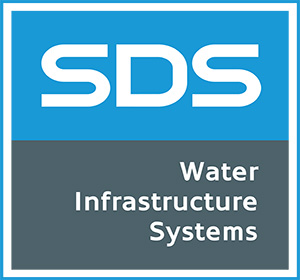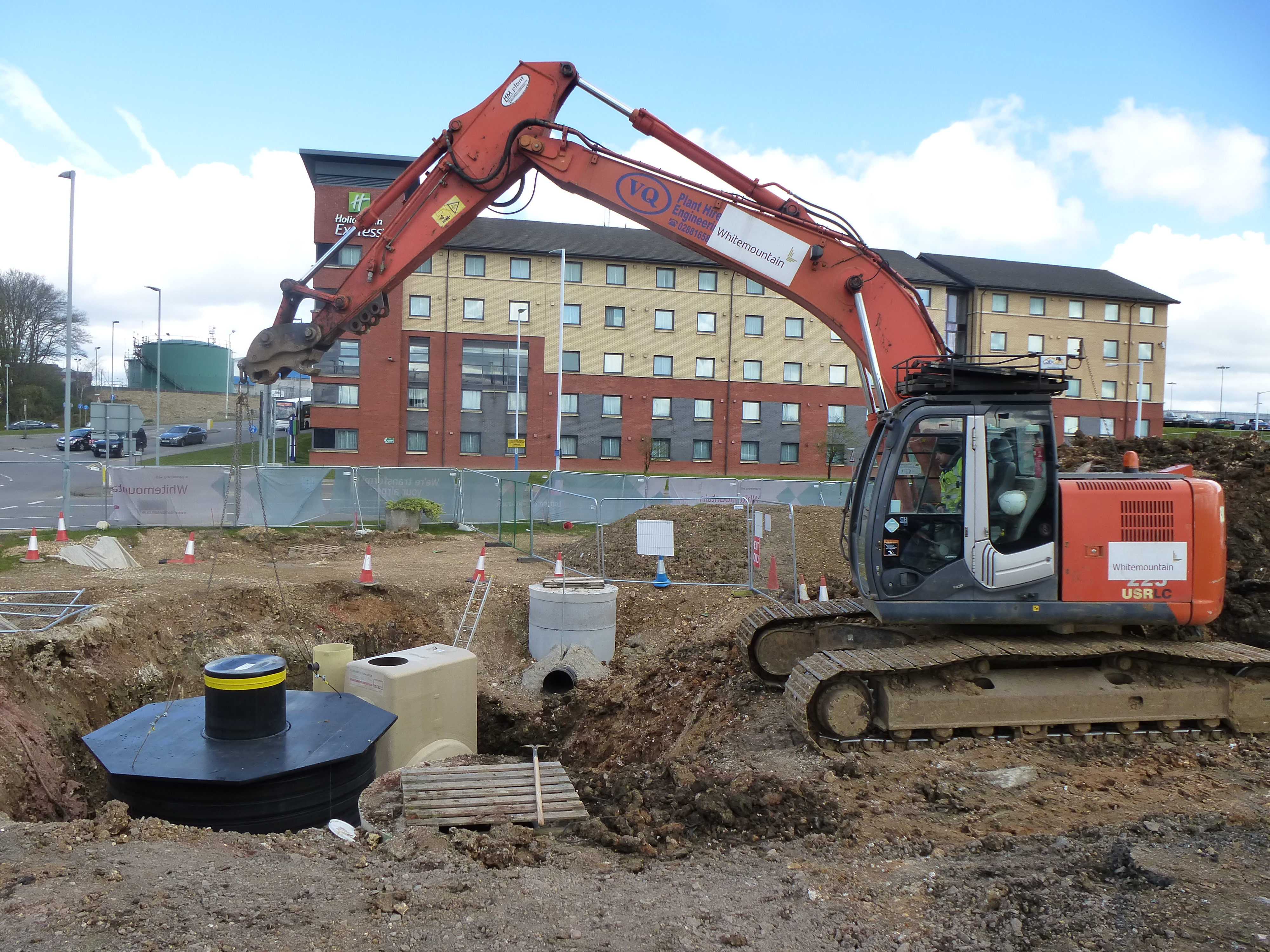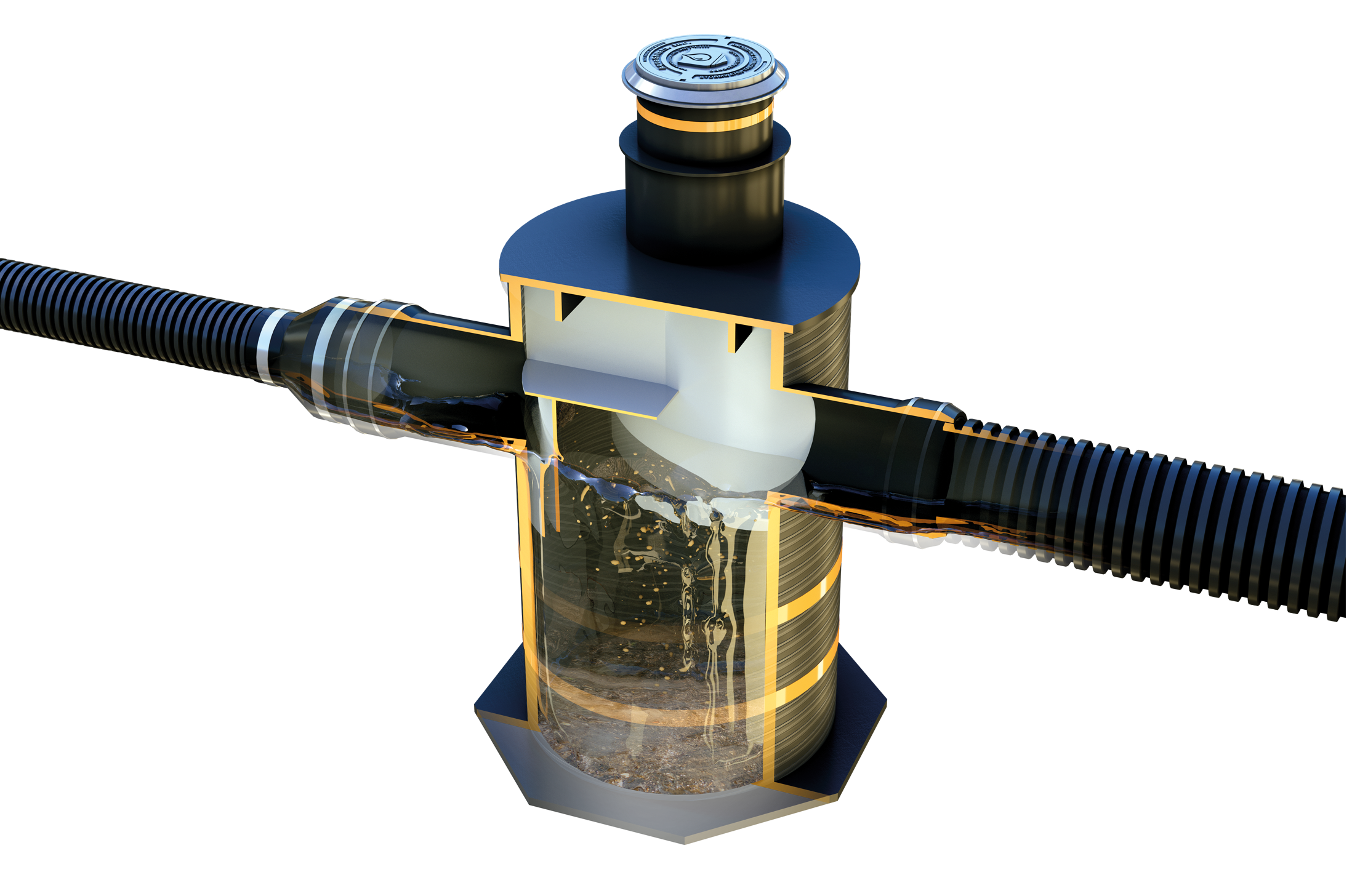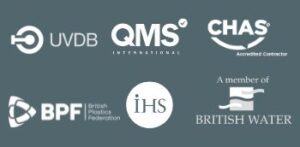WHAT WE DID
In late April 2016, SDS installed a new SuDS system to handle surface water runoff from Luton Airport’s extended medium-term car park.
The five SDS GEOlight® attenuation tanks have the combined capacity to store up to 4,277 cubic metres of water, which has been first cleansed by each of two SDS Aqua-Swirl™ hydrodynamic vortex separators. These are designed to remove approximately 90 to 95% of the total pollutants in the surface water runoff volume.
The airport’s underground storage facility landside has sufficient capacity to accommodate excess airside surface water runoff, the first flush of which will be highly contaminated with substances such as de-icing chemicals and wll be diverted to the Thames Water foul system for treatment. While airside and landside runoff had more typically been considered two entirely separate wastewater streams, LLAOL developed plans to holistically manage all sources of surface water, including the control of their dispersal in the most environmentally friendly and ecologically conscious way.
The new system has been designed to series 500 of the specification for highways works and sewers for adoption and follows engineering consultancy Mott MacDonald’s flood risk design for a 1:100-year storm event, including an allowance for an additional 20% due to climate change. Surface water drainage is managed in accordance with the ‘Design Manual for Roads and Bridges’ (‘DMRB’), the ‘Manual of Contract Documents for Highways Works’ (‘MCHW’) and ‘Sewers for Adoption Seventh Edition’.







